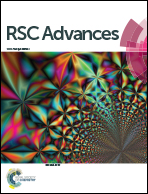Effect of Na+ and K+ co-doping on the structure and electrochemical behaviors of LiFePO4/C cathode material for lithium-ion batteries
Abstract
Lithium iron phosphate (LiFePO4) composites co-doped with Na+ and K+, Li1−x−yNaxKyFePO4/C (0 ≤ x ≤ 0.03, 0 ≤ y ≤ 0.03, x + y = 0.03), are synthesized through a sol–gel method and tested as a promising cathode material for lithium-ion batteries (LIBs). The main purpose is to pursue the best ratio of Na and K ions and improve the discharge capacity and cyclability of the system. The electrochemical characterization of the system is carried out through charge/discharge analysis, cyclic voltammetry (CV), and electrochemical impedance spectroscopy (EIS). The surface morphology and structure of the systems are studied using scanning electron microscopy (SEM), transmission electron microscopy (TEM), and X-ray diffraction (XRD). The electrochemical studies revealed a superior performance for the Li0.97Na0.02K0.01FePO4/C system among several studied systems. The TEM results show a distribution of the particle size, between 50 and 100 nm, for this system. At the optimized conditions, a value of 163.9 mA h g−1 was obtained at a 0.1C discharge regime and a voltage range of 2.5 to 4.2 V for initial discharge capacity. Furthermore, the EIS results showed a significant decrease in the charge transfer resistance of the system upon co-doping of the Na+ and K+ ions.


 Please wait while we load your content...
Please wait while we load your content...